Throughout the world, in all civilizations, there are celebrations reflecting nature’s rhythms, important transitions, and significant moments in the life of the culture. We celebrate these to sustain and renew ourselves. For people today, who can so insulate their lives as to be unaware of the seasons, of reaping and sowing, of dark and light, of birth and death, seasonal festivals can help provide a real touchstone with the cycles of the earth and the soul nurturing they provide.
In Waldorf schools, the elements of festival—light, food, song and story—permeate the weekly school rhythm. However, the cadence of the year receives its form through seasonal festivals. Annual Waldorf festivals of nature and humanity are celebrated in ways that foster wonder, reverence and gratitude and which nourish the future capacity to respond—to be responsible for and among the human community.
Below are some of the seasonal festivals that are widely celebrated in Waldorf schools and homes.
Some of these festivals are unique to Waldorf while others are uniquely celebrated in the Waldorf tradition. I have included typical dates for these seasonal festivals.
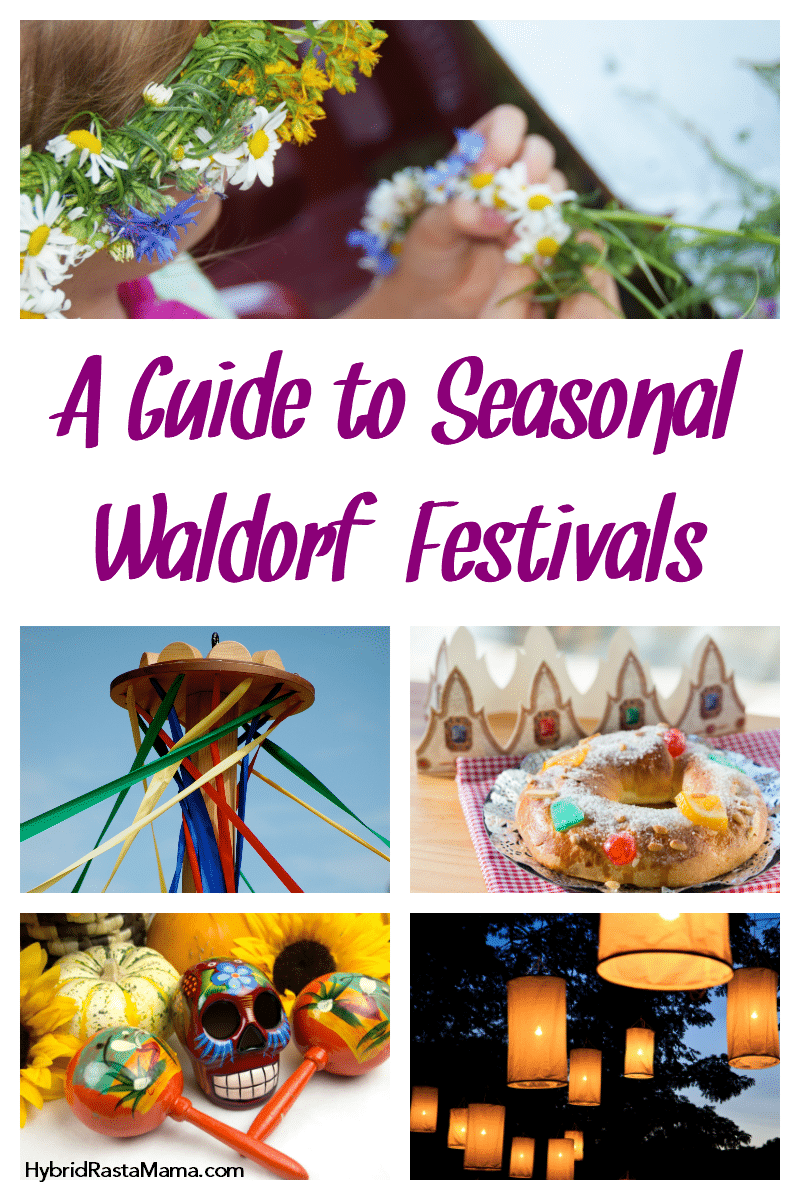
Autumn Waldorf Festivals
Michaelmas: Feast of Saint Michael ~ September 29
Enrolling in a Waldorf school for the first time may also mean a first encounter with the celebration of the festival of Michaelmas for many families. It stands as one of the four corner posts of the yearly cycle of festivals.
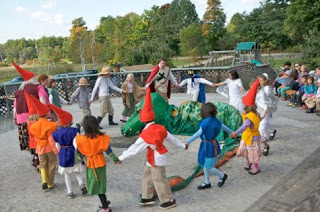
Michaelmas celebrates the forces of the Archangel Michael (usually pronounced Myk-i-el), the time-spirit of this epoch. As the seasons transition from the outer warmth of summer to the coolness of fall, we turn inwards, towards ourselves and towards our community for inner warmth. The Michaelic forces imbue us with the confidence and courage to look to the spiritual world for strength, and renew the impulse to live our lives on the earth to the best of our abilities and become a true community of human beings. In the Celtic tradition, Michael represents the unconquered hero, fighting against evil and the powers of darkness. He is a model for valor and courage. Waldorf tradition celebrates with a play about St. George, the human counterpart of Michael, taming the dragon.
Dia de los Muertos ~ November 1 and 2
Día de los Muertos is a celebration that comes from the blend of the pre-Hispanic Mesoamerican cultures and the Spanish Catholics. The indigenous cultures of Mexico believed that the souls of the departed returned to visit during this time of year.
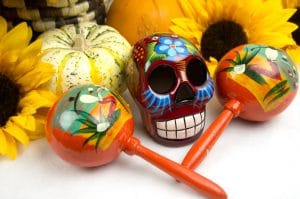
To this day, families gather to remember those who have gone, with stories, singing, dancing, and sharing a feast composed of their remembered loved ones’ favorite foods. The customs for Día de los Muertos are as diverse as a simple offering of flowers at the tombs of the loved ones to creating beautiful and artistic altars to honor family members who have crossed over. Waldorf high school students often create a campus altar to honor all of their ancestors. Everyone is invited to bring photographs of loved ones, flowers, candles, and any special mementos that hold the memory of ancestors.
Martinmas: Feast of Saint Martin ~ November 11
From France comes the legend of Saint Martin, who as a young man passed under an archway in the city of Amiens and discovered a poor beggar huddled there. The man was nearly naked, shivering with cold, and had received no alms to assist him. On seeing him, the young Martin took his own cape from his shoulders, tore the garment in half, and covered the poor man to warm him. The following night Martin had a dream in which he saw Christ wearing the same piece of his cape. The experience confirmed in him his devotion to all humankind regardless of their station in life.
Saint Martin was known for his gentleness, his unassuming nature, and his ability to bring warmth and light to those who were previously in darkness. On the evening of Martinmas, he is remembered in many French households with a festival of lanterns, carrying light throughout the darkened home, singing songs.
The Waldorf Martinmas celebration is inspired by old customs honoring St. Martin. As the sun sets earlier and rises later, the world grows darker and the inner light of humankind wants to shine forth. Children and parents gather as the sun sets. Handmade lanterns, often decorated with stars, suns, and moons, are lit as a symbol for the children of their own individual light. There is a symbolic walk into the cold, dark evening which gives children and their families an experience of caring and sharing as we move toward the darkness of winter.
Advent Spiral ~ November 27
Advent Spiral takes place on the first day of Advent, the fourth Sunday preceding Christmas. The days are short, the nights are long and this festival helps remind humankind of our ability to bring our own light into darker times.
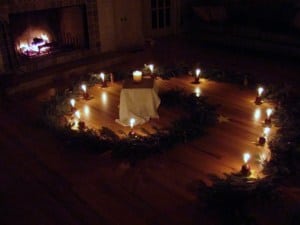
A spiral of greenery is laid out on the floor of a quiet, darkened room and filled with items representing three kingdoms: plant, mineral, and animal (man being the fourth). At the center a lit candle is placed, and each child is given a turn to make his or her way through the spiral to the center, carrying an unlit candle they have made in preparation for this day. When the center candle is reached the children light their own candle off of the central candle and then place it somewhere along the spiral as they make their way back out. As the children place their candle along the path the light in the room slowly grows. It is a quiet and moving experience, both to participate in and to watch.
Saint Nicholas Day: Feast of Saint Nicholas ~ December 6
Saint Nicholas Day is a European tradition in which Bishop Nicholas and his silent servant Rupert visit children. Saint Nicholas often visits the classrooms bringing small gifts, usually oranges, chocolate coins and nuts, to the younger children. He then delivers a scroll with verses indicating the strengths and weaknesses of each child.

The focus is not on whether the child has been naughty or nice, but on the inner qualities of each child. His visit gives the children a chance to reflect on their past year’s behavior and to make resolves for the coming year.
On the eve of December 5, in many traditions children place their shoes outside the door hoping Saint Nicholas will leave a treat.
Santa Lucia Day: Feast of Saint Lucy ~ December 13
According to the old Julian calendar, December 13th was the longest night of the year. The declining daylight reminded people that the season of cold and hunger was approaching. People yearned for a friendly spirit to intercede, restoring the light to the earth. Over many centuries, this spirit of light became personified in Santa Lucia, the Queen of Light. In many northern European countries, this day is commemorated by a young girl dressed in white wearing a crown of lighted candles. She symbolizes a young girl who was killed by Romans fifteen hundred years ago for refusing to give up her religion. There is also a legend that during a time of great hunger in Sweden, she miraculously appeared, her head surrounded by a halo of light. She brought food to the starving and filled their despairing hearts with light and warmth.
Traditionally, the second grade students lead this celebration for the Waldorf school. The oldest 2nd grade girl dresses in white with a beautiful crown on her head and leads a procession of 2nd graders through the school. They visit every classroom with warm buns to eat, symbolizing warmth and light in this cold, dark season.
Winter Waldorf Festivals
Epiphany or Three Kings Day ~ January 6
The twelve days of Christmas end with the feast of epiphany, or three kings day. This commemorates two events in the life of Christ: the visit of the Three Kings who have followed the Star to Bethlehem, and the Baptism of Christ performed by St. John at the Jordan river. With children, Waldorf schools concentrate on the Three Kings.
The children put shoes out on the Twelfth Night and these may have three gifts, one from each king, inside them next morning. These are little gifts such as, fruit and nuts, something golden, something with a wonderful scent. The manger scene has changed as well. The shepherds have returned to their flocks. Mary now wears a golden crown and is holding the Christ Child in her arms. The Star, large and bright appears over the stable. The Christmas tree and other decorations have vanished, put away by Christmas elves in the night.
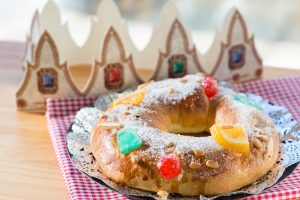
In the evening at the school or at home, families gather around the manger scene, lit by candles. There are star cookies and Cake of Kings for a snack and someone tells the old Russian story of Baboushka. They read from the Bible about the Three Kings, and sing “We Three Kings” and other appropriate carols.
After Epiphany the Kings can gradually return to their homes, traveling through the house; Mary and Joseph travel to Egypt, also through the house. After a week or so, manger scene it put away and replaced with a picture of St. Christopher, who also searched through the world for the Highest.
Candlemas ~ February 2
Candlemas marks the time in the cycles of the earth half way between Winter Solstice and Spring Equinox. For many cultures, this is considered the beginning of the new year.
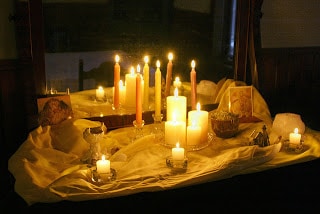
Candlemas has its ancient roots in Imbolc and is itself one of the roots of Groundhog Day. This is a day when we celebrate the returning light of spring. Daylight is noticeably longer despite the fact that winter remains. It is during this time of year that we are reminded that the cold earth holds within it a flame–the promise of spring and the warmth to come. We might even cautiously creep out of hibernation and see if spring is on its way. Just like the groundhog!
Waldorf schools typically hold candle making sessions for students followed by a candle lighting ceremony with singing and stories.
Chinese New Year ~ January 23
Chinese New Year, also known as the Spring Festival, is a widely celebrated festival which marks the beginning of the Chinese Lunar Calendar. Taking place over fifteen days, it is a time spent with family welcoming the health and prosperity of the coming year, bringing about reconciliation and ushering in harmony. The children participate in various activities associated with the festival such as reminiscing about the past year, eating jiaozi and tangyuan, and lighting lanterns.
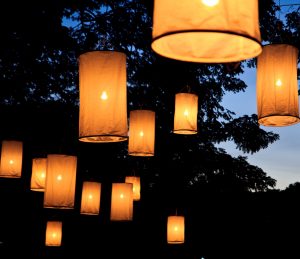
Valentine’s Day ~ February 15
Long before St. Valentine became the patron saint of lovers, a festival was held in ancient Rome during February in honor of the great god Pan. The festival was called Lupercalia and one of the customs was for the names of young men and women to be drawn in lottery fashion to choose token sweethearts.
During the third century, the Bishop Valentine of Rome was martyred on the eve of the festival of Lupercalia. He was a man noted for his goodness and chastity and eventually the day acquired his name. The element of chance and the theme of love remain. Flowers, red heart shapes, lace, doilies and birds are symbols of this celebration. For children today, it is the element of surprise of a pretty card rather than romantic notions that holds enjoyment of the day. This favorite day of the heart is often celebrated on February 14th in the classrooms with small parties and the exchanging of Valentine cards.
Spring Waldorf Festivals
Earth Day
Earth day is celebrated internationally as a day to inspire awareness and appreciate of the earth and her natural environment. In Waldorf schools, students are not taught conservation or environmentalism directly in the early grades, rather they are engaged in experiential learning that fosters their potential to be thoughtful, caring, and active stewards of the Earth. Waldorf schools work with an awareness of where all things originate as gifts from the Earth: paper from trees; crayons from bees, color from plants, and so on. The teachers lead students in daily practice of remembering these gifts with gratitude and in exercising care for how the Earth’s resources are used. This builds inner habits that prepare the children for being environmentalists on the deepest levels. Class teachers may choose to honor this day with their classes in a quiet, reflective manner.
May Day ~ May 1
May day was in ancient tradition the celebration of the beginning of summer or Beltane in Celtic lands, and Roman tradition sacred to Flora, the goddess of Spring. The May queen is still representative of Flora, or Persephone her Greek counterpart.
If the wreath of flowers goes back to Spring goddess symbols, the Maypole itself represents, most probably, the tree of life and fertility. In the modern context both are just good, festive fun, and a reminder that warmer days are ahead.
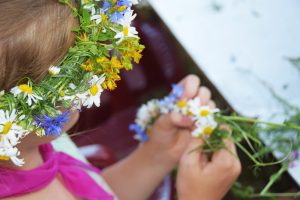
The typical May Day celebration gives students the opportunity to share this festival with family and friends. Grade school children enjoy the tradition of dancing to music around the May Pole which is decorated with flowers and colored ribbons. Children and adults have traditionally worn flowers when dancing around the May Pole. A single blossom in the buttonhole or hair, or an actual ‘May Crown’ or wreath of flowers for the head symbolizes the full arrival of spring and the new growth.
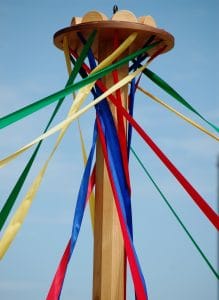
All of the students sing traditional spring songs. In addition to the festive dancing and singing, community is further formed by sharing light refreshments.
Summer
St. John’s Tide/ Midsummer ~ June 24
St. John’s Tide celebrates the birthday of John the Baptist. At Midsummer, in nature, the forces of growth are at their height, the earth is in its most extrovert phase of the year. Likewise, there is a tendency in us as human beings to be outgoing, expansive, maybe even a little outside ourselves.
At the times of extremes of light and dark in nature (that is, midwinter and midsummer) we are in danger of carrying the tendencies of nature too far. We may expand too much at midsummer and miss the ‘turning point’ and so go on expanding and float dreamily through the second half of the summer, which for most of us includes the holidays.
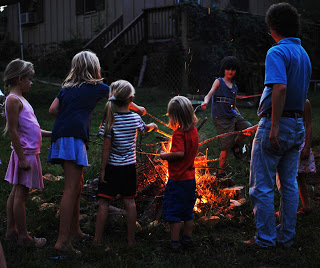
The custom of lighting a fire at Midsummer is a very old one, but it is still followed in many places. It goes back to pre-Christian times and has taken many different forms, but there often seems to have been some idea and experience of purification or the overcoming of evil linked with it. In the middle ages, it was customary to look at the fire through flowers, as it would keep your eyes healthy, or to dance around the fire with garlands of flowers and herbs, and in the end to jump over the fire, throwing the garlands into the flames, wishing and praying for all illness to be burnt up. Nowadays, each of those gathered round the fire might throw into it a piece of paper on which is written any unkind thoughts they have had during the past year. This, one might say, would be the nearest of all to a Christian way of celebrating St. John’s message: the need for change and transformation in ourselves.
Yet there is another way of symbolizing this awareness: instead of gathering wood outside for the fire, you gather it inside your house! In some places the fire is indeed built up of broken furniture and other thrown-out belongings. This may be less attractive than logs, but it is quite an impressive image for children for whom St. John’s message may seem rather ‘adult’. This image consists of cleaning our house, clearing out and burning up the old, to make space for something new.








I Thought I Knew Mama says
Very cool resource!
I’m pinning it to refer back to.
kathy says
Hello
Good Day to you, i have been trying to find good topic on google for my blog
and i found yours i found it very interesting i ve learn alot
thanks
Kathy
http://www.healthandwellnessconsultants.com
Scherry Hodges says
Thank you for this wonderful information about the Festivals. I would only encourage you to add Christmas and Easter since they are also a big part, possibly the biggest and most glorious festivals of the Christian year and the Waldorf family year. The other festivals are sacred and beautiful and lead up to these two moments in time that the world was changed forever. A turning point in time. They are beyond the religion of Christianity and are given to the whole of humanity regardless of religion, race, or station in life. Thank you again for your thoughtful and lovely contribution here.